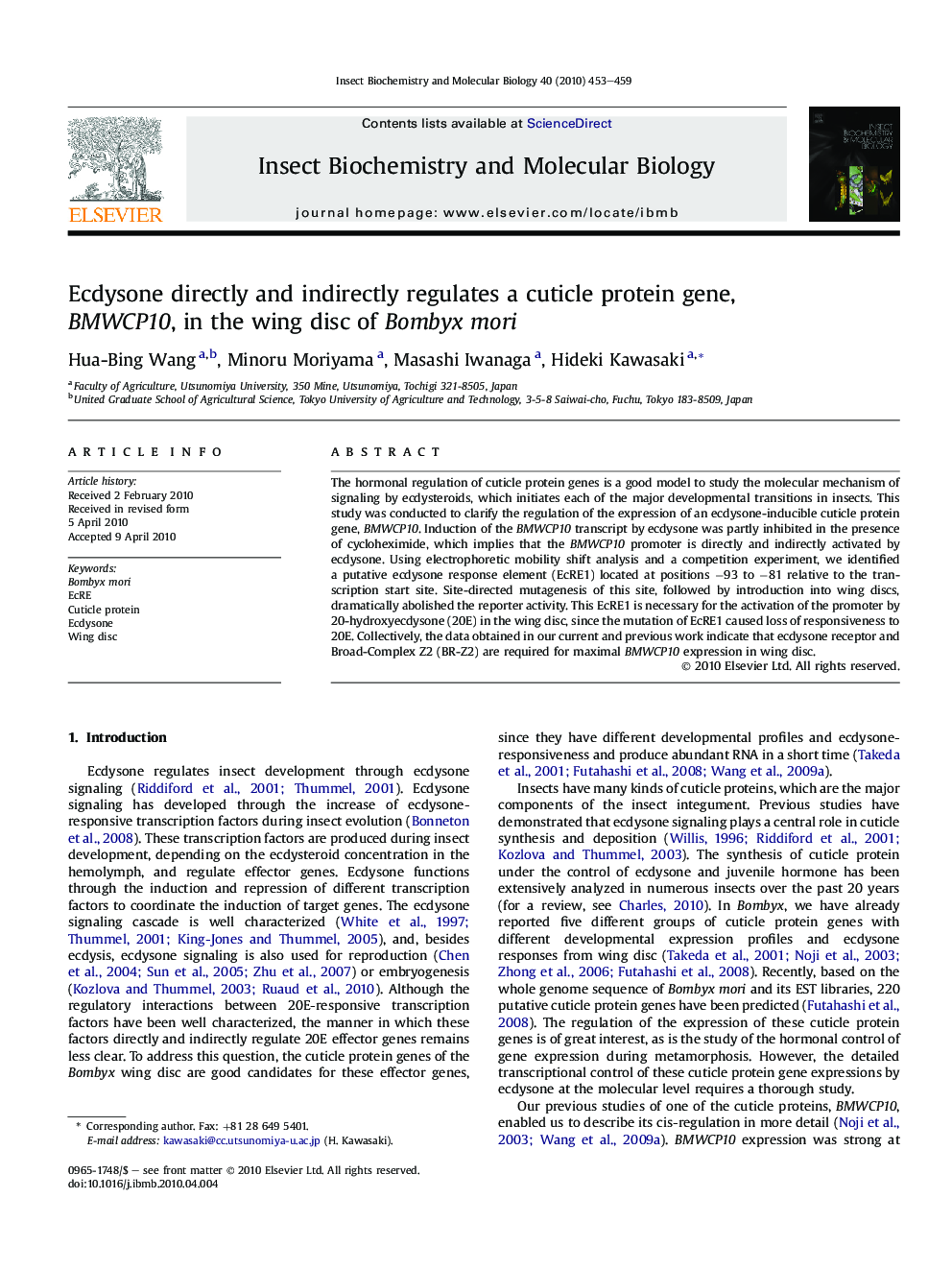| Article ID | Journal | Published Year | Pages | File Type |
|---|---|---|---|---|
| 1982581 | Insect Biochemistry and Molecular Biology | 2010 | 7 Pages |
The hormonal regulation of cuticle protein genes is a good model to study the molecular mechanism of signaling by ecdysteroids, which initiates each of the major developmental transitions in insects. This study was conducted to clarify the regulation of the expression of an ecdysone-inducible cuticle protein gene, BMWCP10. Induction of the BMWCP10 transcript by ecdysone was partly inhibited in the presence of cycloheximide, which implies that the BMWCP10 promoter is directly and indirectly activated by ecdysone. Using electrophoretic mobility shift analysis and a competition experiment, we identified a putative ecdysone response element (EcRE1) located at positions −93 to −81 relative to the transcription start site. Site-directed mutagenesis of this site, followed by introduction into wing discs, dramatically abolished the reporter activity. This EcRE1 is necessary for the activation of the promoter by 20-hydroxyecdysone (20E) in the wing disc, since the mutation of EcRE1 caused loss of responsiveness to 20E. Collectively, the data obtained in our current and previous work indicate that ecdysone receptor and Broad-Complex Z2 (BR-Z2) are required for maximal BMWCP10 expression in wing disc.
